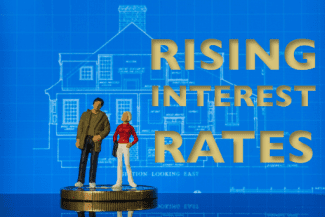How Interest Rates Hikes Have Changed the Dynamics in Real Estate Investing
Rising interest rates in 2022 thus far have had the most significant negative impact on the single-family housing market. Housing prices have cooled and transactions have slowed – data from Marcus and Milchap show that sales are down 27.5% since their peak in January 2022. On Tuesday (9/27), the S&P CoreLogic Case-Shiller index showed home prices in the largest 20 cites fell 0.44% in July, the first drop since 2012. However, with a higher cost of capital and a lack of supply, affordable housing hasn’t become more obtainable for the average American.

When it comes to the rental market, rent increases have finally showed signs of slowing after over a year of record growth, however, rents are still at record highs. According to data from Realtor.com, after 13 months straight of double-digit rent growth, rent increased 9.8% from August to July. This is an important trend to watch, and while multifamily has been more resilient than the housing market, it remains to be seen how further rate hikes will affect performance as we enter the fourth quarter.
Interest Rates Effect on Financing and valuations
In 2022, we have seen banks scale back their financing activity as a result of economic uncertainty and rising rates. Most banks have tightened their underwriting standards on even the safest of CRE investments. This has resulted in missed opportunities for traditional financers and has created dislocation in the capital markets which alternative lenders such as private debt funds have taken advantage of by lending with a higher cost of capital to account for the added risk.
These alternative financers can be entrepreneurial and move faster than banks to provide creative financing solutions to borrowers who are feeling an increased amount of pressure. However, capital necessary to acquire and construct property must be priced for developer’s profit or development will stagnate in the coming years, which will only exacerbate the housing shortage.
As the housing market and economy has slowed, there is growing uncertainty about property valuations on nearly all asset types from single family homes to large multiuse commercial assets. In times of rapidly rising interest rates, not only is the future more unclear, but it becomes increasingly difficult to properly value CRE assets based on historical data, cap rates, and asset performance. Further, it becomes more difficult to predict refinancing and investment exits going forward and borrowers are hesitant to take floating rate loans and fixed rate loans are increasingly expensive.
Impact on Construction
The Commerce Department reported Tuesday that multifamily starts rose 28.6% from July to August, however building permits fell 18.5% during the same period, suggesting an eventual slowdown in multifamily construction. Additionally, housing being built across the board is down around 13% from April and projects will become more difficult to reach probability due to the higher cost of capital. When it comes to building materials, despite high inflation we have seen certain commodity prices come down significantly from their Covid peaks. Softened demand, rising rates, and fewer supply chain disruptions have resulted in Lumber prices, for example, coming down more than 70% from March, according to the WSJ.
Get a Free Multifamily Loan Quote
Access Non-Recourse, 10+ Year Fixed, 30-Year Amortization
Conclusion
Due to the current unfavorable dynamics facing homebuyers and banks pulling back on financing projects, we believe opportunities will continue to arise for alternative commercial real estate investors. CRE is traditionally a strong hedge against inflation, especially in the multifamily market which is more recession proof than other asset classes due to the necessity of housing. Multifamily rentals have the shortest loan terms, which is beneficial in an environment with rapidly rising prices.
Specifically, we believe multifamily investment in top tier and gateway cities such as NYC present some of the best investment opportunities in the current market. Residential prices may go in a negative direction in the near term, but fundamentally there are several obstacles which will prevent prices and rent from falling in the long term in these cities. While dynamics differ from location to location, the drivers behind the resiliency in these markets is simple: Demand has remained strong, while supply has failed to keep up. There is pent up demand for city housing with people returning to the office following Covid lockdowns.
On the supply side, high building material prices, labor shortages, regulation, supply chain disruptions, a lack of land, and government restrictions have delayed new developments of multifamily properties over the past few years and the high cost of capital will discourage developers from taking on these projects going forward.
Source: Nasdaq















 Accessibility
Accessibility